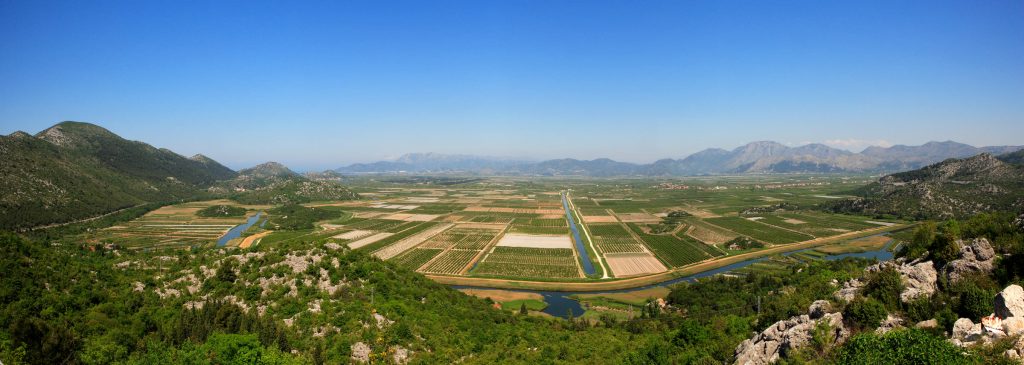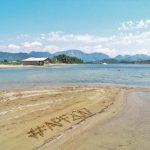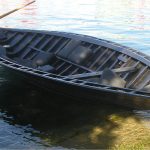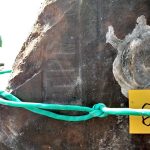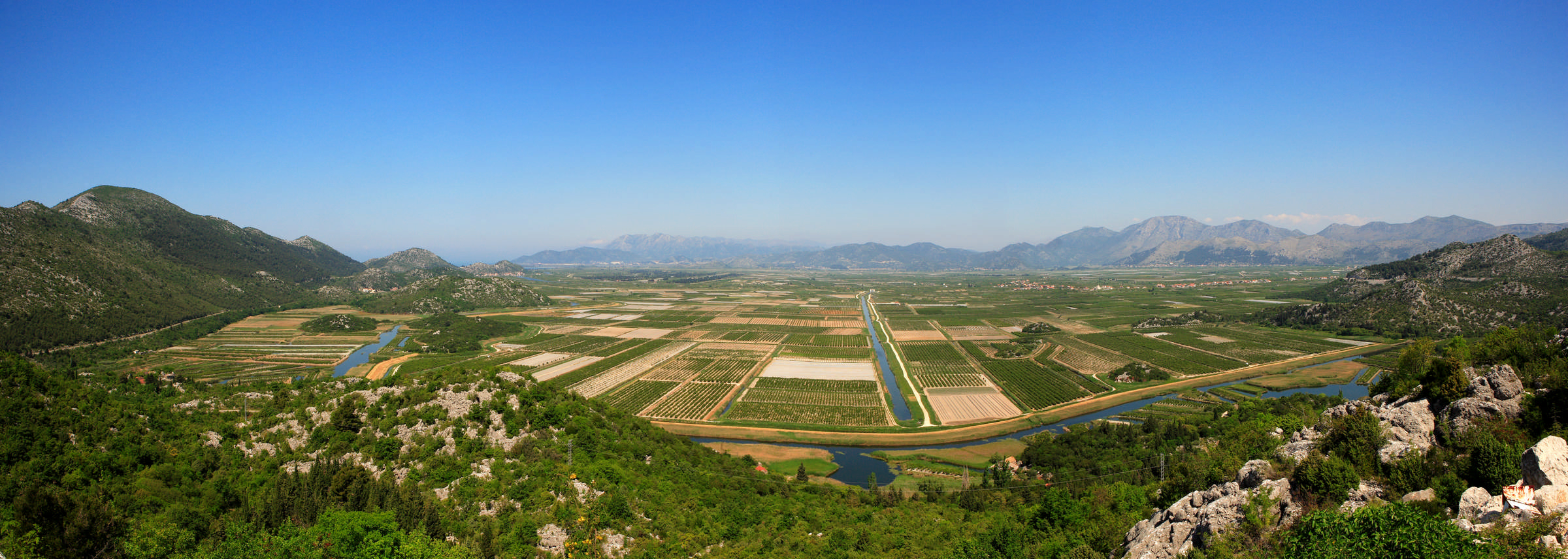
January 3, 2021 – The noble pen shell, or ‘periska’ in Croatian, has been spotted in the mouth of the Neretva river! The good news for ecologists, nature lovers, and the scientific public, was revealed by Professor Goranka Ivanković, who noticed live noble pen shells while diving into the estuary at the end of 2020.
“I was happy like a little kid. The periska came back to us, it stayed alive, it was not destroyed by parasites at our mouth of the Neretva,” the visibly delighted professor said on Slobodna Dalmacija.
“When I dived, I saw a noble pen shell; it wasn’t some great depth. I touched her foot and saw that she was firm. It means there is life in it. The first thing that came to my mind then was that not everything was lost for the noble pen shell,” she added.
“We are constantly bombarded with bad news, and this is really something nice,” Goranka said, who noticed a hundred or so live shells, which is really a sensation because the colonies of noble pen shells in the Adriatic Sea have long been devastated.
You can only find empty shells stuck in the sand of the seabed and those that the tide throws ashore. These are silent witnesses that this endemic species once lived there.
“Love for nature and the environment is essential for the survival of humanity. We have to keep what God has given us,” said Professor Ivanković, who expects scientists to have fun with her discovery because “not everything is as dark as it seems.”
The entire professional, scientific public rose to their feet to save what was left of these Adriatic shells. Unfortunately, unsuccessfully. Basically, it all came down to a statistical enumeration of the shells of dead individuals. Therefore, any different information about noble pen shells is welcome and is followed and evaluated with interest.
Professor Ivanković’s knowledge is on that track. Although her information that the noble pen shells are located at the Neretva’s mouth has not yet been expertly evaluated, it is certainly a good sign and indicator that something is changing for the better.
Similar information comes from the Kvarner Bay, where live shells have been observed at a depth of forty meters. A larva of a noble pen shell was found near Omis, which was then transferred to the Pula Aquarium until its return to a safe, natural environment.
Namely, it is the first larva so far found along the entire Adriatic, and according to the experience of scientists from Spain, only a dozen specimens can be expected. Embryonic development of the noble pen shell begins with developing the first planktonic larval phase (trochophore). After 24 hours, a free-swimming and fluttering larva develops into a veliger larva in which the first shell is formed, scientists explain.
Recall, the noble pen shell (lat. Pinna Nobilis) is the largest shellfish in the Mediterranean, known by many different names. It grows at depths of up to 30 meters in the coastal zone, often in meadows of sea flowers that produce a lot of organic matter that the shells feed on, and this is where they reach large dimensions or can grow up to 120 centimeters. The younger shells’ surface is covered with scales, but the older ones are overgrown with algae, mosses, tubers, sponges, and other sedentary organisms. It is distributed throughout the Adriatic on the sedimentary bottom of shallow coastal areas.
Unfortunately, the noble pen shells at the mouth of the Neretva, as in the rest of the Adriatic, died en masse, thanks to parasites and bacteria affected by climate change and global warming. You might remember the apocalyptic scenes at the mouth of the Neretva from the beginning of 2020 when the sea released hundreds of shells of this endemic marine species, which is protected by several national and EU laws and directives.
“This discovery at the mouth of the Neretva should be scientifically processed. If this is true, if we have live noble pen shells in the mouth of the Neretva, then we have a world sensation,” said Tatjana Bakran Petricioli, who is currently preparing for Brijuni where they will try to catch common periwinkle.
“Unfortunately, there are many reports that noble pen shells can be seen in the seabed, which were later determined not to be alive. We should definitely dive and determine if there is an animal in the shell, or if they are alive,” points out Dr. Petricioli, who emphasizes that a colony of live shells was found in the Venetian lagoon.
“I want to believe that there is hope for the noble pen shells, but our experiences so far do not indicate that. Now we will go to the Brijuni Islands. Whatever we find, we will carefully take them out and transfer them to the Pula aquarium,” says Dr. Petricioli.
The noble pen shell death in the Adriatic is catastrophic. Along the islands of Vis and Lastovo, there is not a single noble pen shell. There were some along Dugi Otok, but they also died. Live noble pen shells can literally be counted by hand,” concludes Dr. Petricioli.
Dubrovnik-Neretva County participates in the project “Preservation of the noble pen shell in the southern part of the Adriatic Sea,” including in the area of the Neretva estuary, where Professor Ivanković spotted shells that she assumes are alive. Her discovery has been recorded in the Bioportal database and is expected to be evaluated soon.
“Some protected areas of the European ecological network Natura 2000 managed by the Public Institution for Management of Protected Areas of Dubrovnik-Neretva County are habitats of the Mediterranean endemic noble pen shell (Pinna Nobilis) whose population is on the verge of extinction throughout the Republic of Croatia,” points out the director, Marijana Miljas Đuračić, and reminds that the noble pen shell has been on the Red List of critically endangered species since 2019 due to pathogens that affected it in 2016 in Spain, while the disease entered the Adriatic Sea in 2019.
“Given the geographical position of the Dubrovnik-Neretva County and the proximity of the Ionian Sea, the occurrence of mortality of noble pen shells in the Republic of Croatia was initially recorded in the Dubrovnik-Neretva County in the area of the ecological network Elafiti, and then spread to the ecological networks of the Ston canal, Rt Rukavac – Rt Marčuleti, Mali Ston Bay and the area of the special ornithological-ichthyological reserve at the mouth of the Neretva.
During December 2019 and January 2020, the Public Institution, in cooperation with the scientific community, recorded a 90% mortality rate of noble pen shells at the Neretva’s mouth,” recalls Miljas Đuračić.
“Locations of noble pen shells can be reported to [email protected] or via the online notification form, which can be accessed via a link on the website of the Institute for Environmental Protection and Nature of the Ministry of Economy and Sustainable Development. All reports can be found on the web portal of the Nature Protection Information System – Bioportal, where data on identified locations of noble pen shells are available and collected so far, in cooperation with the scientific and professional community and the interested public,” concluded Miljas Đuračić.
To read more about lifestyle in Croatia, follow TCN’s dedicated page.

